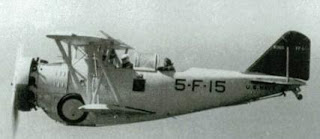The Grumman FF-1 was an American naval fighter, which was in service with the US Navy in the 1930s. Its prototype, the XFF-1, took to the air for the first time on December 29, 1931. After satisfactory completion of several tests in Anacostia, deliveries of the first 27 production aircraft began in April 1933. They were assigned to the USS Lexington's VF-5B Squadron of the US Navy. They would be withdrawn from front line service in 1936, to be replaced by the F3F-1.
Technical Characteristics
The Grumman FF-1 was a two-seat, single-engine biplane. The upper wing had the maximum span. Both planes were joined together by inverted N shaped struts and a slanting metal tube on each side. The front landing wheels were retractable, folding outwardly into the aircraft fuselage sides, right behind the engine.
Specifications
Type: naval fighter
Length: 7.46 m (24 feet, 6 inches)
Wingspan: 10.5 m (34 feet, 6 inches)
Height: 3.35 m (11 feet, 1 inch)
Weight: 1,395.2 kg (3,076 lb)
Powerplant: one 750-HP, Wright R-1820-78 Cyclone, air-cooled, radial engine.
Maximum Speed: 333.1 km/h (207 mph)
Range: 1,178 km (732 miles)
Ceiling: 6,827.5 m (22,400 feet)
Crew: 1
Armament: three .30-calibre machine guns.
Below, four Grumman FF-1 fighters of the VF-5B Squadron in 1934.
The XFF-1 prototype in early 1932.
Below, a FF-1 taking off from the flight deck of USS Lexington (CV-2)



